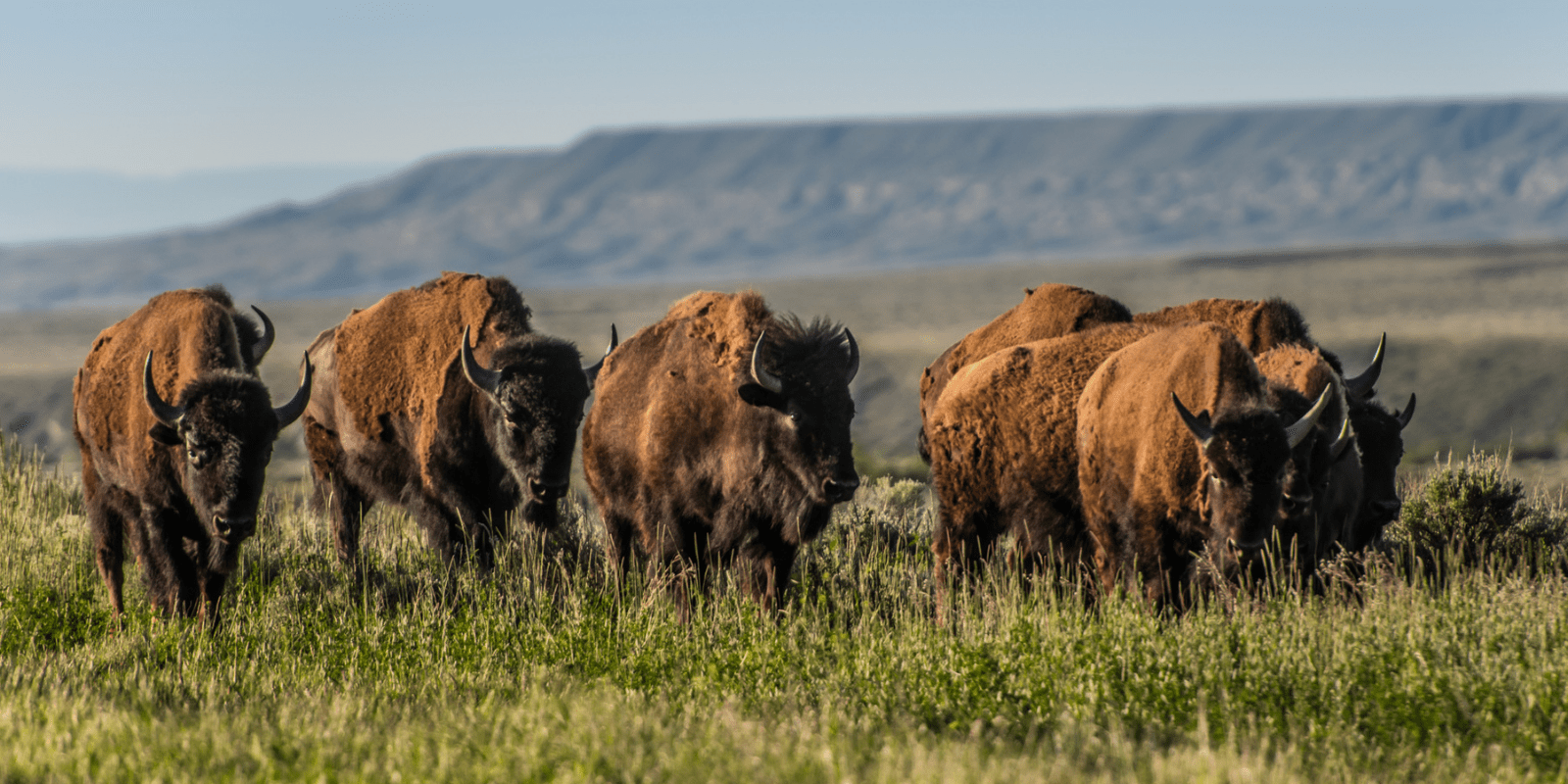We have much more to do and your continued support is needed now more than ever.
We are Here, and Buffalo are our History and Future

The history of the land on which we walk is engraved in the earth, as people have been here for thousands of years. Whether it is the high-elevation mountains, the driest deserts, fastest flowing streams and everywhere in between, Indigenous people were there. Within those differing ecosystems the people which inhabited them had a deep understanding of principles, laws and values in the natural order of life, a balanced system.
National Bison Day is about celebrating the buffalo as a keystone in Native American history and the landscape of our country. Restoring buffalo to tribal communities is reconnection, a way to heal from past atrocities and to offer opportunities for our Native peoples to embrace their culture.
The Eastern Shoshone refer to ourselves as ‘Gweechoon Deka’, or buffalo eaters, and we have deep connections to buffalo, considered to be an American icon. We understood that all systems are interconnected, interdependent and in relationship with one another. This is why my people utilized a vast territory for access to a variety of foods, medicines and supplies, including buffalo, to ensure they would continue to be there for time immemorial.
My grandpa told me our reservation was created so that we would always be able to maintain our way of life, to have access to plentiful game, fish and clean water and to practice our ceremonies and customs passed onto us.
Buffalo once dominated grassland and prairie ecosystems across the West. As these great herds of buffalo grazed across the land, they had a myriad of positive ecological impacts to not only the soil, water, and plant life, but to insects and a variety of animals as well, living in synergy to benefit their habitat.
Looking forward
Today, buffalo remain a vital piece to the well-being of not only Indigenous communities like my own, but also to the land itself. The Gweechoon Deka and many other Tribes were dependent upon the wildlife economy from buffalo and other animals – like pronghorn, elk, and deer — for millennia. The medicine wheel philosophy is written in stone throughout the Rocky Mountains from Canada to the Southwest. But the way of life for my ancestors was changed forever by the arrival of settlers and pioneers. Government policies encouraged a way of life that was foreign and in opposition to our understandings of what it means to be a human being and how we related to the natural world.
Our connection to the plants, animals, fish and water were marginalized in turn for a new worldview, a disassociation from our relatedness to the creation around us. Our ceremonies were outlawed and forbidden until only 42 years ago with the American Indian Religious Freedom Act of 1978.
That’s why we’re working to bring buffalo back to their rightful place on the landscape and throughout our culture. But before we can make real progress in buffalo restoration and conservation, we need a paradigm shift in how we collectively “see” buffalo. Today, the animals are generally confined by fences or prescribed boundaries. The people who travel to see them are probably unaware that most are privately managed and not considered “wild.” We have forgotten how to see buffalo in their habitat, the way we see pronghorn, moose, elk and other wildlife species.
The history between Native Americans and buffalo is not a story that everyone knows, but our histories are intricately intertwined – and that story should be shared with all Americans. While we cannot recreate the vast herds that once were, we can bring buffalo back. The buffalo’s story is not only a Native American story but it’s an American story as well. Buffalo have been absent from our lives and we have forgotten how to see them, but this is changing and there is hope for our shared journeys.
Buffalo conservation is a story of hope, of revitalization, that we want share with you. Together, we can envision a future where we reconnect to the lands and animals that are fundamental to our consciousness.






















